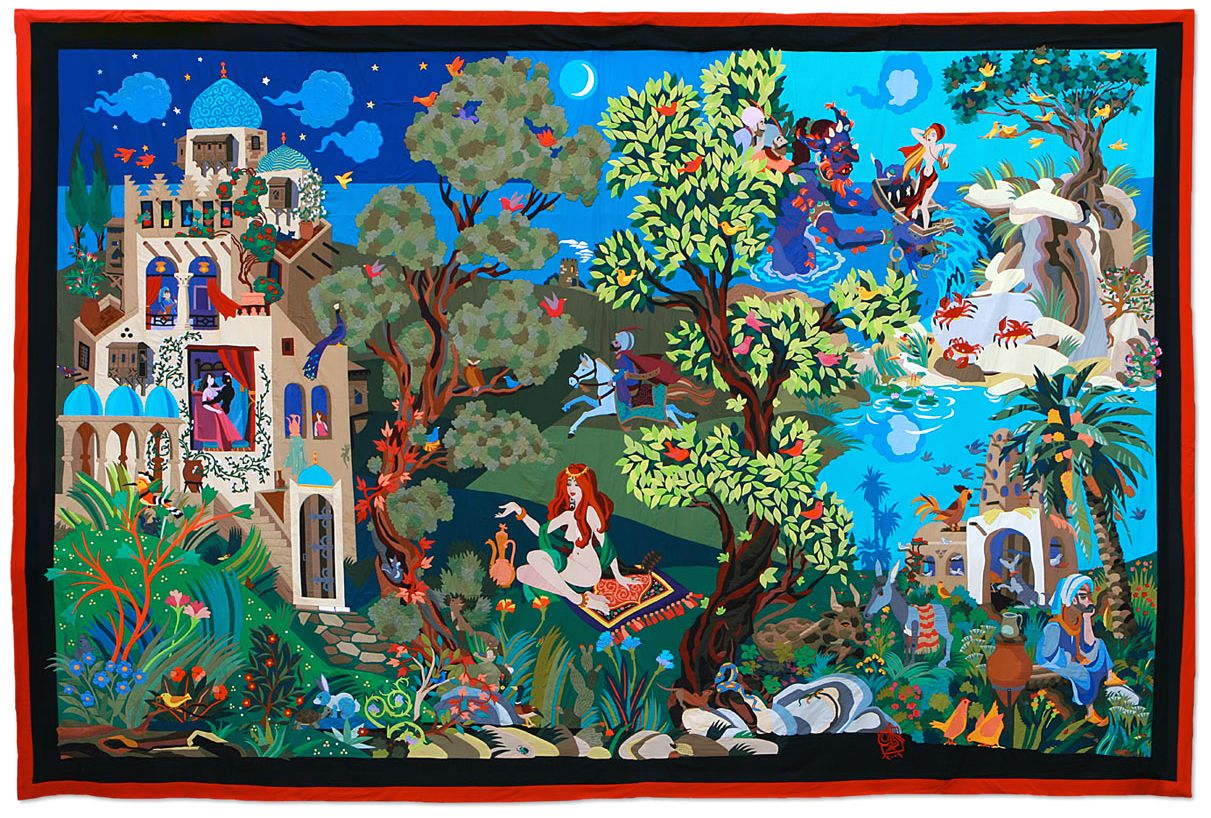
Disney and more readers knows well Hani El Masri thanks to the two previous articles i did about his work as a WDI Imagineer on the first Toon Town concept as well as on Blizzard Beach and Tokyo Disney Sea.
Hani left Walt Disney Imagineering some years ago and is now living in Cairo, but we will have a look today to his latest - and incredible - creation and how an Imagineer change his medium. First i have to tell you that Hani when he still was at WDI was lead designer on Arabian Coast for the Tokyo Disney Sea project. What is less known is that Hani designed an incredible concept for the Sindbad attraction and i will probably do an article one day about this "Sindbad attraction that never was". Unfortunately WDI choose another concept, closer to an occidental/hollywoodian vision of the legend of Sindbad, and soon after that Hani left WDI.
But the famous tales of 1001 Nights has always been one of Hani's favorite and since then Hani wanted to give a grand tribute to one of the most famous collection of stories in the world. In January of 2009 the idea - and the project - took shape when Hani began to design what will be a huge Egyptian tapestry, a work of art.
Inspired by Classical Folk Tales the Thousand and One Nights and executed in the traditional blind stitch patchwork technique of Egypt called Kheyameya, this one of a kind unique tapestry was finished recently and is now available for purchase. The piece stands an impressive 5 meters tall by 8 meters wide (16.5 feet x 26.2 feet), weighs 45 Kilograms, and was composed with a staggering 102 unique colors.
The scene of the tapestry is dedicated to the opening story of the Thousand and One Nights, The story of the stories, and the circumstances that led Scheherazade to tell the king her nightly tales, not just to save her neck, as it is thought, but also to cure him from his blinding jealousy.
And how do you create such an impressive and huge tapestry, you ask? Well, like anything in art it all starts with an idea, a sketch, a line drawing and then a full color painting. Here is below the "line" only version...
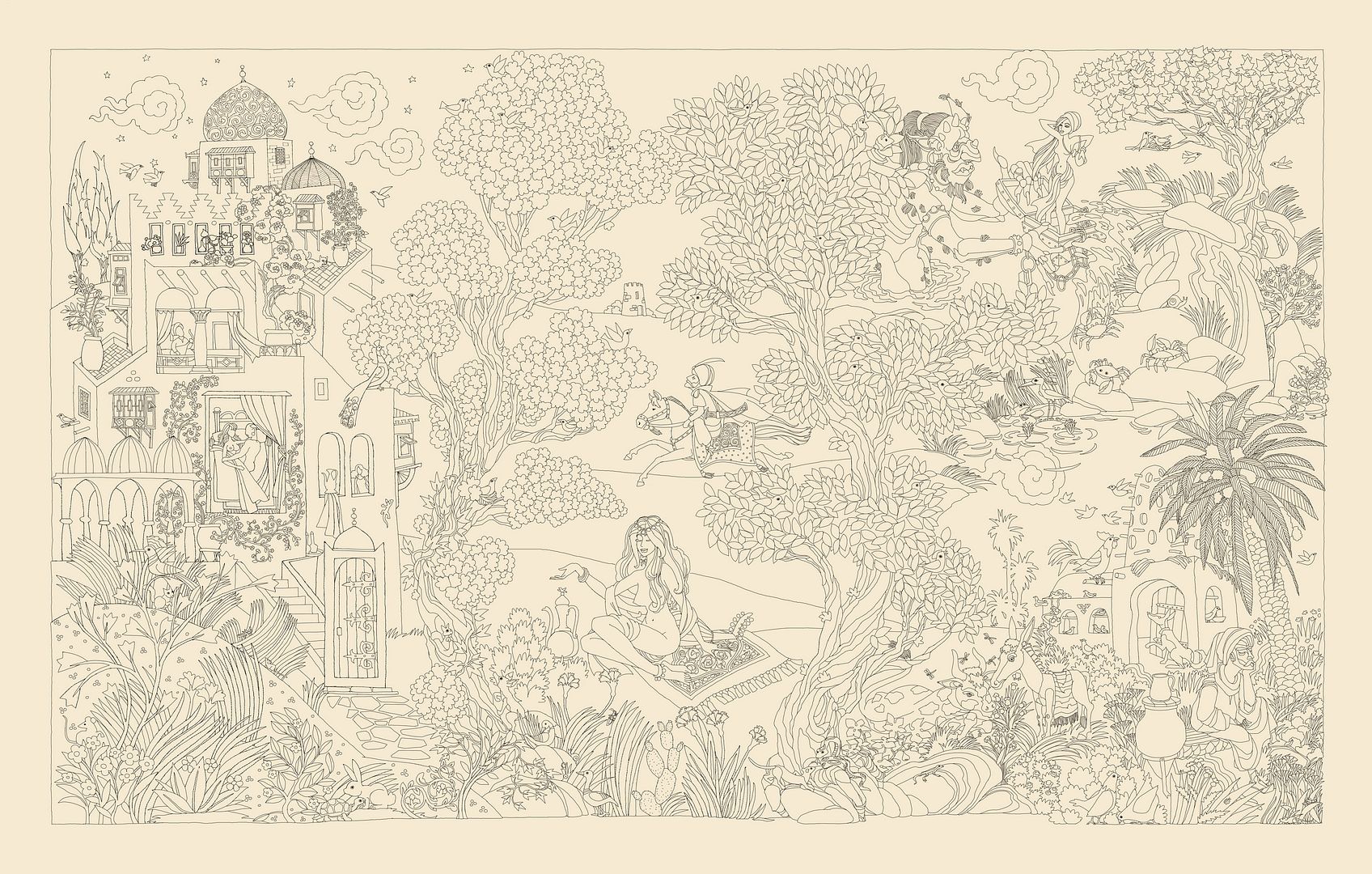
...and the final painting with colours. The pictures are in high-res and i strongly recommand to double-click on the pictures to explore this fantastic scene in details.

Then the Kheyameya workers began to create the patchwork. By the way, the word Kheyameya has its origins in the Arab word for 'tent' (Khaymah), you are probably familiar with it from the name of the famous twelfth century Persian poet and scientist Omar Khayyam, since his family made tents in Nichapour, Persia.
In the wider Middle East, the craft consisted not only in the fabrication of large tents, but also decorating the inside walls with traditional patterns since the main use of these tents was to host large family gatherings and social events like weddings,
religious celebrations and funerals.
Today, across the Middle East this craft is disappeared due to changes in our modern lifestyle. Fortunately Kheyameya has survived in Egypt, as an entire section of medieval Cairo has morphed into another tradition of home furnishings. From wall hangings to bedspreads, tablecloths and pillowcases, the colorful pieces artistically and painstakingly hand stitched with traditional geometric patterns, ancient symbols or skillful combinations of both, are everywhere in Egyptian homes and have become some of the best tourist souvenirs you can buy in Cairo bazaars.

The work itself begin with a line drawing. The line work then enlarged to the right size on blueprint paper and the lines are patiently perforated to create a stencil.
The stencil is in turn transferred to the base canvas using a simple dusting technique and the little dots are clear enough to be the guide for redrawing the patterns onto the fabric.

Next, every shape is assigned a different color and neatly covered with a colored piece of fabric, usually a cotton twill, linen, silk or muslin, which is blind stitched to the background canvas in a thread of the same color as the swatch.
By the time the tedious work is finished, the result is delightful, lively and extremely durable
The result of the finished tapestry is spectacular as you can see on the picture at the top and on these close shots showing details of the tapestry.
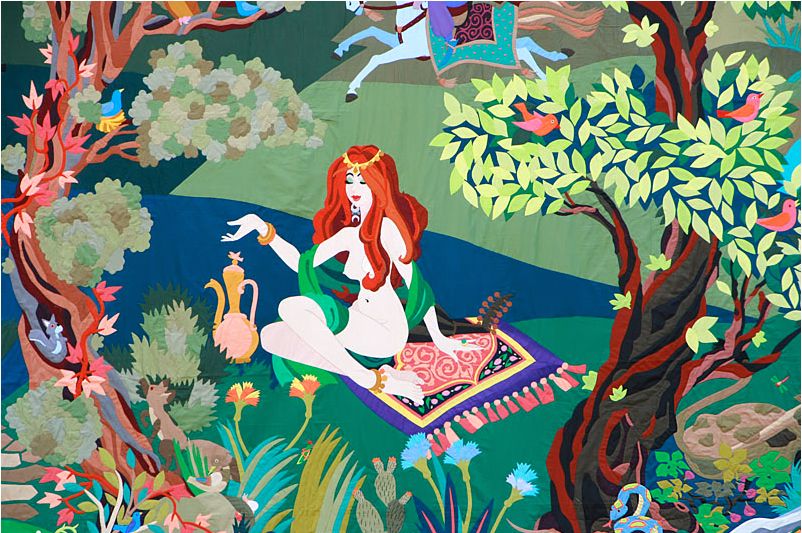
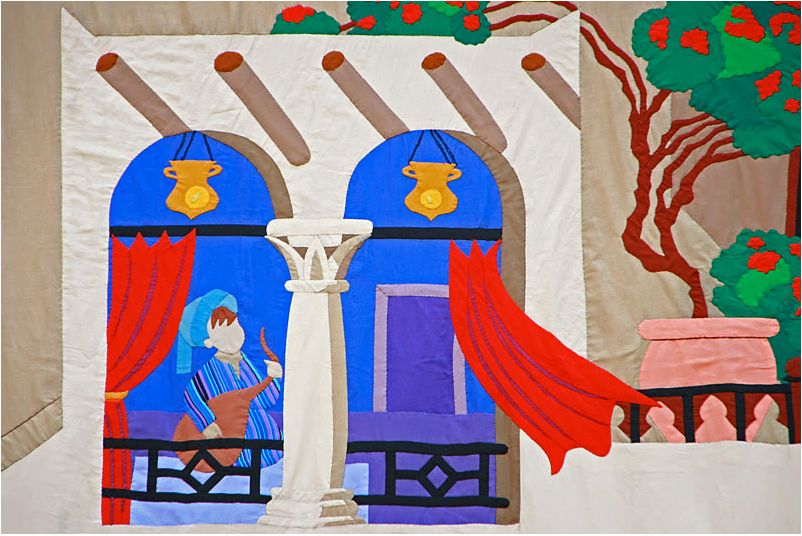
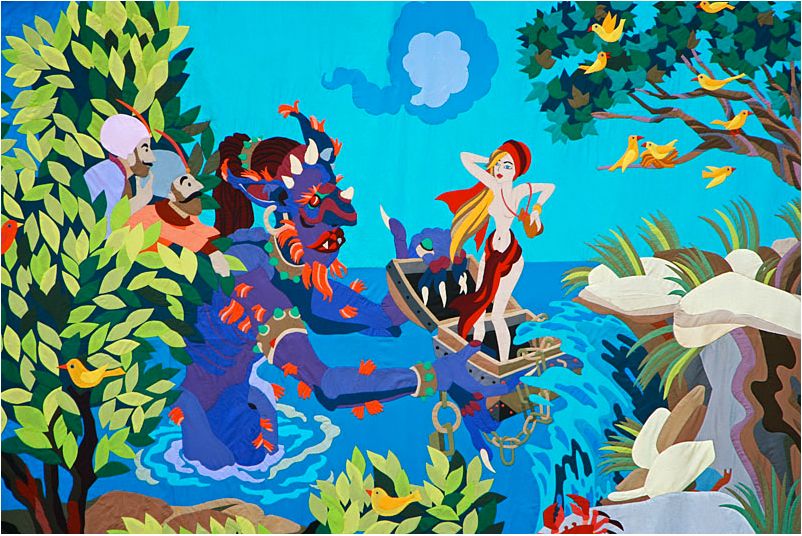
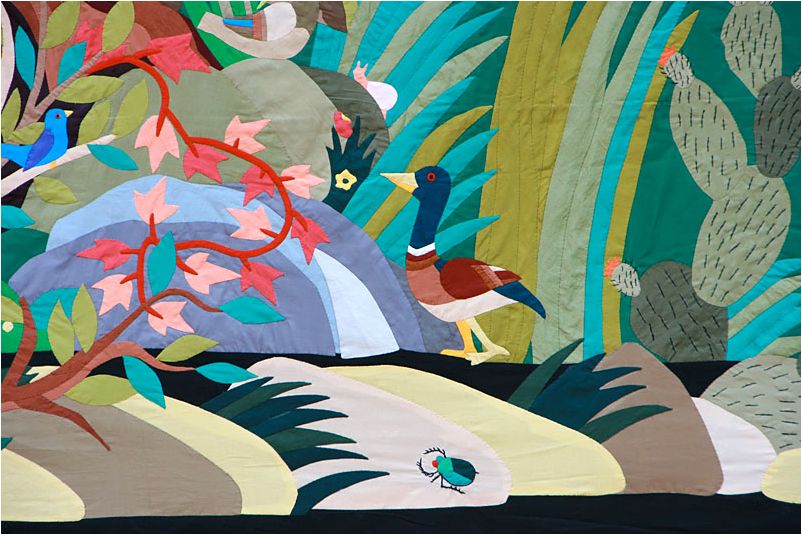
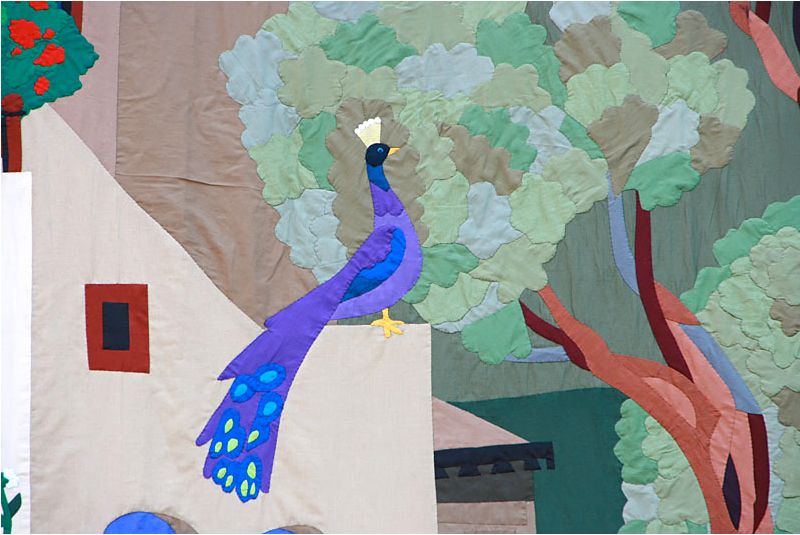
The work lasted nine months and on the next picture Hani arrive at the work-shop and is amazed by the magnificent work.

On this last picture, Hani El Masri stands near the now finished tapestry.
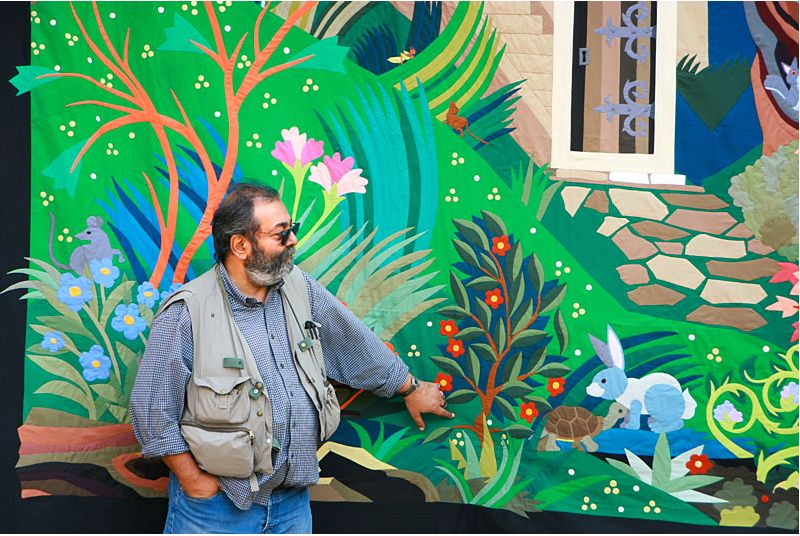
As i've said this is a one-of-a-kind piece of art and the tapestry is now on sale for a price of $150.000. No need to say that the buyer better have a huge room in his house but the tapestry could be perfect in the huge lobby of a luxury hotel or - why not - inside a theme park decor!
You can see more pictures on Hani's web site HERE and anyone interested by this beautiful Egyptian tapestry will find on the site a link to contact Hani.
All pictures: copyright Hani D. el Masri







